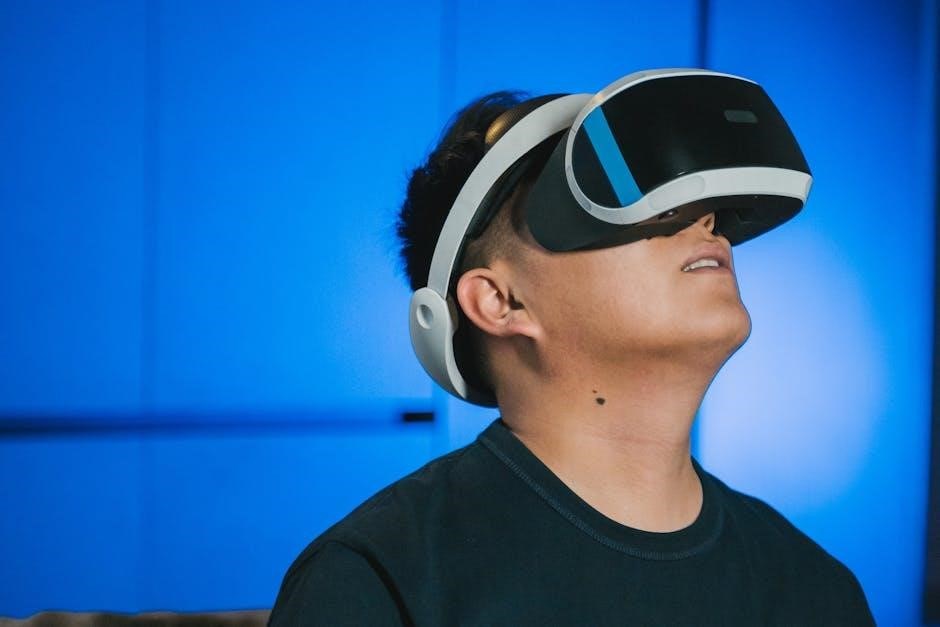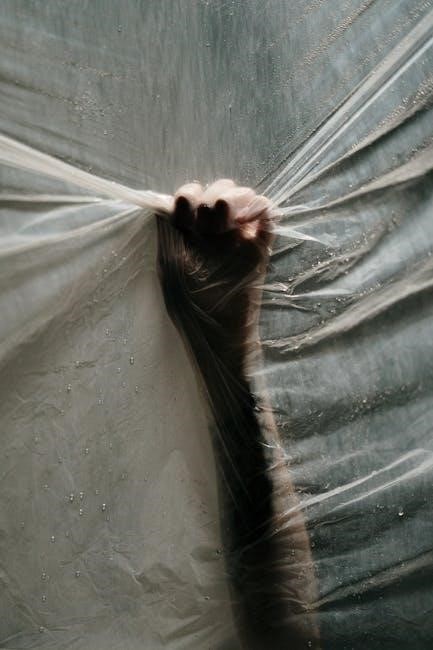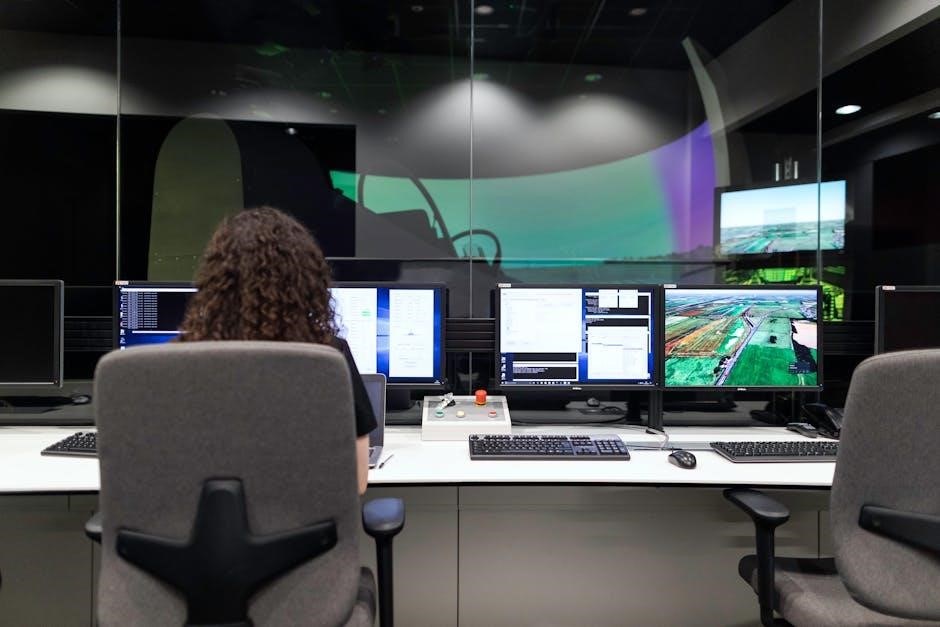Simulacra and Simulation: An Overview
Jean Baudrillard’s “Simulacra and Simulation,” explores how our current society has replaced reality with symbols and signs. It delves into the concept of hyperreality, where these simulations become more real than real.
Key Concepts in Baudrillard’s Work
Baudrillard’s framework centers on simulacra, copies that misrepresent or lack originals, and simulation, the process of replacing the real with these copies. Hyperreality emerges when simulations become more real than reality, blurring the lines between the two. The precession of simulacra describes the historical stages of representation, from reflecting reality to masking its absence. Baudrillard critiques consumer culture, advertising, and media for contributing to this simulated reality, arguing they create needs and desires divorced from authentic experience. His work explores the implications of this shift for meaning, truth, and individual identity in contemporary society.

The Precession of Simulacra
The precession of simulacra outlines how signs evolve from reflections of reality to masks that obscure reality. Ultimately, these signs bear no relation to any reality whatsoever, creating a simulation.
Orders of Simulacra
Baudrillard identifies stages of simulacra. The first is faithful representation, reflecting reality. The second masks and perverts reality. Next, masks the absence of reality, becoming a simulacrum. Finally, the simulacrum bears no relation to reality: pure simulation. This fourth order constructs hyperreality. Examples can be found in art, media, and technology. Advertising, for example, often presents idealized versions of reality, leading to a sense of dissatisfaction with actual experiences. Understanding these orders is vital to grasp Baudrillard’s critique of contemporary society. They represent stages of abstraction.
Hyperreality and Its Implications
Hyperreality is the condition where simulations become more real than reality itself. This creates confusion between real experiences and simulated ones. Hyperreality significantly impacts culture, society, and our understanding of the world.
The Loss of the Real
In Baudrillard’s framework, the proliferation of simulacra leads to a concerning loss of the real. As simulations replace genuine experiences, our ability to distinguish between the authentic and the artificial diminishes. Advertising and consumption play significant roles in shaping a hyperreal world where signs of status and controlled consumption dominate. This shift blurs the lines, making it increasingly challenging to access an unmediated reality. The constant exposure to simulacra desensitizes us, making the “real” seem less appealing than the curated and idealized simulations, leading to a detachment from genuine experiences and a preference for artificial constructs.

Simulation in Contemporary Culture
Contemporary culture is characterized by a pervasive simulation where signs and symbols dominate our experiences. This phenomenon, explored in Baudrillard’s work, profoundly impacts various aspects of modern life, shaping perceptions and interactions.
Advertising and Consumption
Advertising and consumption play pivotal roles in constructing simulated realities. Baudrillard examined how advertising creates desires for products beyond their practical value, focusing on the symbolic meaning they convey. Consumption, in this context, becomes a participation in a system of signs, where individuals purchase identities and social statuses rather than mere goods. The simulated world of advertising shapes our understanding of needs and wants, blurring the lines between genuine desires and manufactured ones. This manipulation contributes to the broader phenomenon of hyperreality, where simulated experiences overshadow authentic existence, driving consumer behavior and perpetuating a cycle of symbolic consumption.
Technology and Simulation
Technology accelerates the blurring of reality and simulation, creating environments where distinguishing between the authentic and the artificial becomes difficult. Digital interfaces and virtual worlds are key components in this simulated experience.
Religion as Technology
Religion, viewed through Baudrillard’s lens, can be seen as a technology that reconnects individuals with the sacred and meaningful. This perspective suggests religion enhances the significance of life, similar to how other technologies aim to improve our existence. The evolution of religion alongside technology highlights the human desire to find deeper meaning. Religious practices and symbols, like technological tools, mediate our understanding of reality. Both religion and technology offer frameworks for interpreting and navigating the world, shaping our perceptions and experiences. Thus, religion is a form of technology.

War as Simulation
Baudrillard analyzes modern warfare, suggesting it becomes a spectacle detached from reality. The media shapes perceptions, creating a simulated experience of conflict, where the lines between real and unreal are blurred.
The First Persian Gulf War Example
Baudrillard controversially argued that the First Persian Gulf War “did not happen” in a traditional sense. He posited that the war was presented through media filters and technological mediation, creating a spectacle more akin to a simulation than a genuine conflict. The public’s perception was shaped by carefully curated images and narratives, detaching them from the actual realities on the ground. The constant bombardment of information, often lacking verifiable truth, further contributed to a hyperreal experience. This constructed reality obscured the true human cost and geopolitical complexities of the war, turning it into a media event.
The Role of Models
Models, in Baudrillard’s view, generate a reality detached from any original. These models precede and determine our perception, creating simulacra. This process obscures the distinction between real and representation.
Generation of Reality
The models described by Baudrillard do not simply represent pre-existing reality; they actively generate a new kind of “reality” altogether. This simulated reality operates independently of any original referent, becoming self-referential. The generation of reality through models leads to a blurring of lines between what is authentic and what is simulated. As technology and media advance, this process intensifies, shaping our perceptions and experiences. The constant bombardment of simulations ultimately leads to a state where individuals struggle to distinguish between the real and the hyperreal, losing grasp of authenticity and grounding.

Criticisms and Interpretations
Baudrillard’s work has faced criticism for being abstract and pessimistic. Despite this, his essays offer a provocative lens through which to understand the complexities of contemporary society and the evolving relationship between reality and simulation.
Understanding Baudrillard’s Provocative Essays
To grasp Baudrillard’s essays, one must recognize his central argument that contemporary culture is dominated by simulacra, copies without originals. These simulations create a hyperreality, blurring the line between the real and the representation. Baudrillard challenges readers to question the authenticity of their experiences in a world saturated with media and technology. His writing prompts critical reflection on how signs and symbols shape our perceptions and understanding of reality. By exploring the precession of simulacra, Baudrillard encourages a deeper examination of the forces that influence modern life and the potential loss of genuine meaning.
Relevance to the Modern World
Baudrillard’s theories remain relevant, offering insights into media influence, virtual realities, and the blurring of reality and representation. His ideas help us understand consumerism, technology’s impact, and the search for meaning.
Applications in Various Fields
Baudrillard’s “Simulacra and Simulation” finds applications across various fields, including media studies, sociology, and cultural criticism. In media studies, it illuminates the construction of reality through advertising and news. Sociology utilizes it to examine consumer culture and identity formation in a hyperreal world. Furthermore, cultural critics employ the text to analyze art, literature, and film, revealing how these mediums often reflect and reinforce simulacra. The text enables a deeper understanding of the relationships between representation, reality, and the human experience in the modern world, shaping critical analysis and discourse in many academic and creative disciplines.
Availability of “Simulacra and Simulation” in PDF Format
Jean Baudrillard’s “Simulacra and Simulation” is widely available in PDF format online through academic databases and digital archives. Many sites offer free downloads for personal study and research purposes.
Sources and Downloads
Numerous online repositories offer “Simulacra and Simulation” in PDF format. Academic platforms often host the text for scholarly use, ensuring accessibility for students and researchers. Digital archives provide alternative sources, though users should verify the integrity of the files. Some websites may offer free downloads, while others require subscriptions or payment. Always ensure the source is reputable to avoid copyright infringement. Checking university libraries’ digital collections can also provide reliable access to the PDF, supporting academic integrity and responsible usage of intellectual property.
